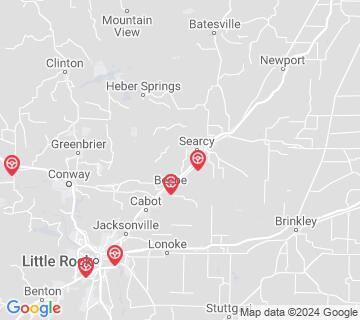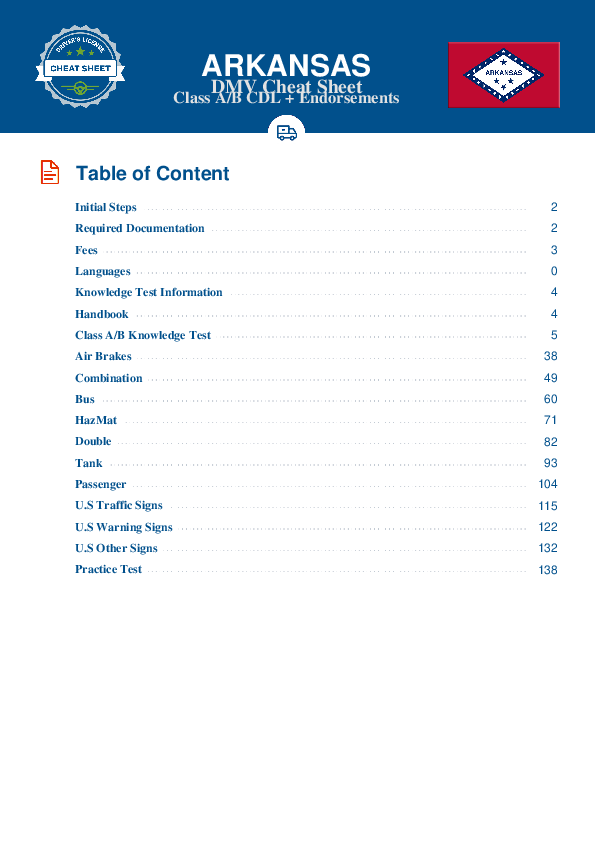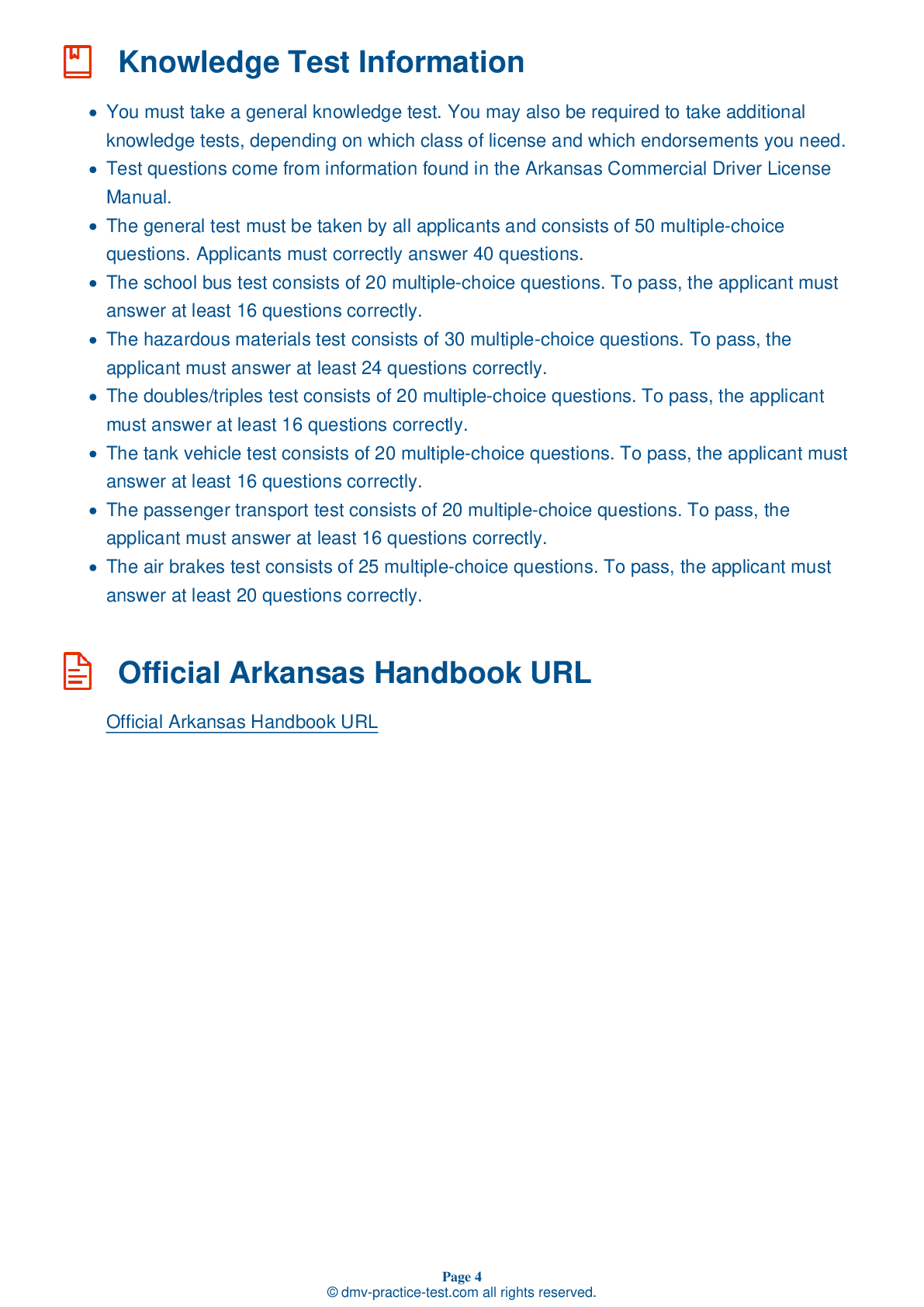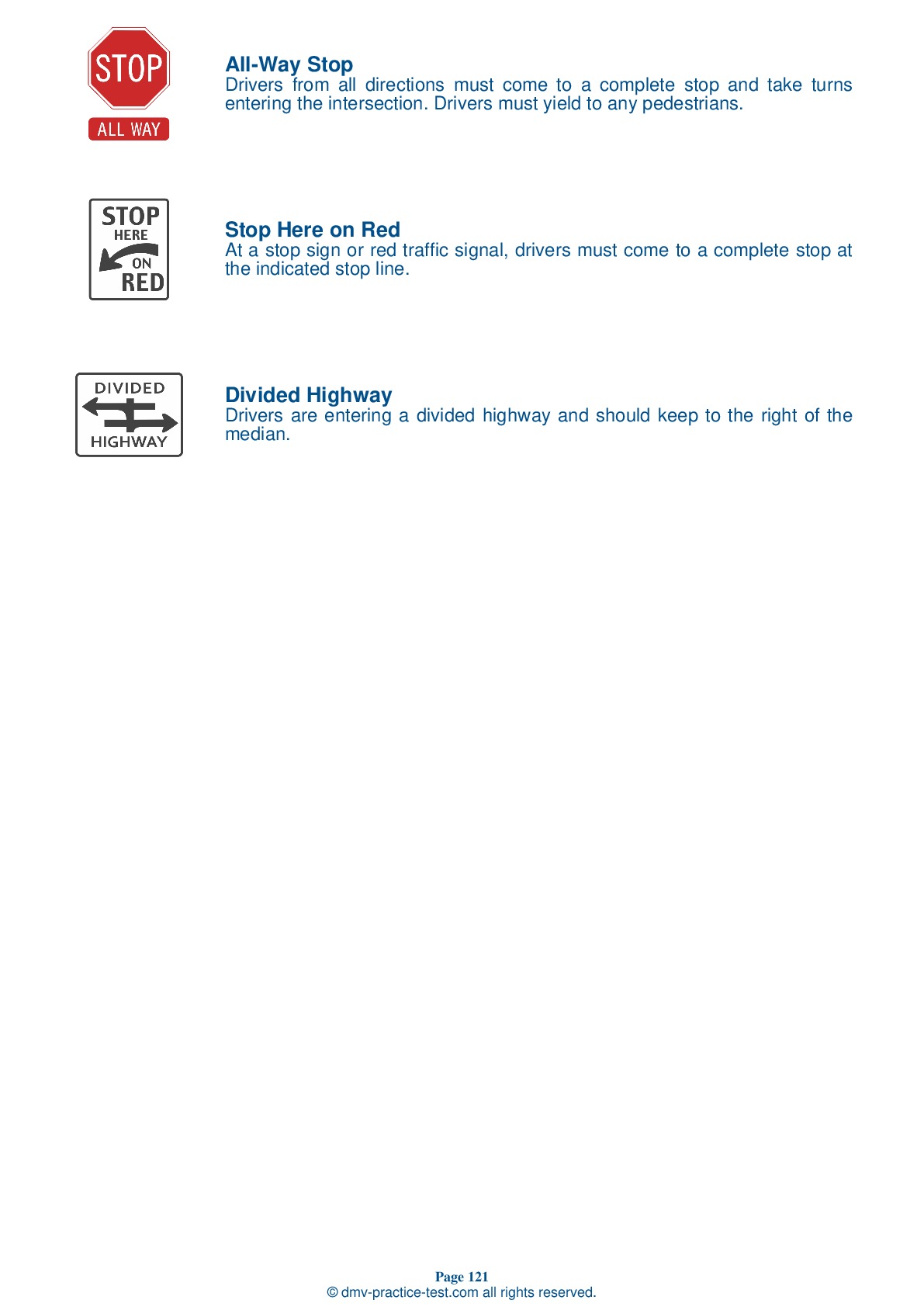Combination #1
Combination Vehicles Practice Test | Arkansas 2025 #1 Page 2 of 3
Train for FREE online with our Arkansas CDL combination vehicle test. The official exam test consists of several obligatory parts, with all of them checking your knowledge of different blocks of road rules. If you need to obtain a AR combination license in 2025, practice as much as possible. Free sample tests published on our website will help you check and improve your knowledge and boost your grades. Please bear in mind that DMV requirements for issuing a combination license may vary from state to state.
20
16
20
8 . When lightly loaded, combination vehicles:
Should be loaded with most of the weight in the rear of the trailer.
When a combination vehicle is lightly loaded, it may have poor traction. It is very easy for wheels to lock up on lightly-loaded vehicles when they are being stopped.
9 . If a trailer begins to skid, it is best for the driver to:
If your trailer begins to skid, you should release the brakes to regain traction. The trailer will begin to straighten out once the wheels begin to grip the road again.
10 . If a trailer begins to skid, the driver should:
Accelerate.
If your trailer starts to skid while you are braking, you should release the brakes and allow them to begin to regain traction. Once its wheels have regained their grip on the road, the trailer will begin to straighten out and follow the tractor.
11 . In a vehicle equipped with an automatic tractor protection valve, the valve will pop out when:
Air pressure is above 45 psi.
In vehicles equipped with an automatic tractor protection valve, the valve will pop out if air pressure drops to a level between 20 and 45 psi. When the valve pops out, the protection valve will close, stopping the flow of air.
12 . Trailers with low underneath clearance can present challenges when driving over:
Railroad-highway crossings may be difficult to cross when pulling a trailer with a low underneath clearance. In particular, both low-slung units and single-axle tractors pulling long trailers are especially challenging to drive over raised crossings.
13 . If your trailer begins to drift off course while you are backing, you should:
Return the steering wheel to the 12 o’clock position.
If your trailer begins to drift while you are backing, you should correct the drift immediately by turning the top of the steering wheel in the direction of the drift.
14 . If you need to back your trailer but cannot back up in a straight path, you should:
Always turn to your right.
If you need to back your trailer but cannot back up in a straight path, you should back on a curved path toward the driver's side of the vehicle. This will permit you the best possible visibility while backing.
Search the best driving school in your neighbourhood
2025 Arkansas | Frequently Asked Questions
A CDL Class A license in Arkansas is defined as a commercial driver's license that permits the holder to operate any combination of vehicles with a Gross Combination Weight Rating (GCWR) of 26,001 pounds or more, provided the vehicle(s) being towed have a GVWR of more than 10,000 pounds. This typically includes tractor-trailers and truck and trailer combinations.
A Class A CDL license in Arkansas allows the holder to operate a variety of heavy vehicles such as tractor-trailers, truck and trailer combinations, tank vehicles, livestock carriers, and flatbeds. It also includes any combination of vehicles with a Gross Combination Weight Rating (GCWR) of 26,001 pounds or more if the towed vehicle is over 10,000 pounds.
To obtain a Class A CDL license in Arkansas, applicants must be at least 18 years old (21 for interstate driving), have a valid Arkansas driver's license, pass a vision test, and successfully complete both a knowledge test and skills test. Also, they must submit a medical examiner's certificate proving they're physically qualified to drive a commercial vehicle.
In Arkansas, you must be at least 18 years old to qualify for a Class A CDL license for intrastate driving (within Arkansas only). However, if you intend to drive across state lines (interstate driving), you must be at least 21 years old.
Endorsements are not required for a Class A CDL license, but they provide additional driving privileges. In Arkansas, endorsements include T for double/triple trailers, P for passenger vehicles, N for tank vehicles, H for hazardous materials, and S for school buses. To obtain an endorsement, you must pass specific knowledge and skills tests.
The Class A CDL skills test in Arkansas encompasses three parts: a pre-trip inspection, basic vehicle control, and on-road driving. The pre-trip inspection tests the driver's ability to assess if the vehicle is safe to drive. Basic vehicle control tests the driver's ability to control the vehicle, and on-road driving assesses road driving skills.
Yes, there are limitations for Class A CDL license holders in Arkansas. Depending on the driver's record, certain restrictions may be applied to their license such as not being allowed to operate a vehicle with air brakes. Additionally, without specific endorsements, they cannot drive vehicles carrying hazardous materials, tank vehicles, school buses, or passenger vehicles.
In Arkansas, the written Class A CDL test is primarily administered in English. However, Spanish versions of the test are available in some locations. It's recommended to contact your local DMV office to confirm language availability. Remember, even if you take the test in another language, you must still understand and read English to comply with federal regulations.
Yes, you can request accommodations for the Class A CDL written test if you have a disability. The Arkansas Department of Motor Vehicles provides reasonable testing accommodations according to the Americans with Disabilities Act. It's crucial to make a request well in advance of your test date, providing necessary documentation to support your request.
Yes, if you don't pass the Class A CDL written test in Arkansas, you can retake it. However, you must wait until the next day to retest. There is also a retest fee that must be paid. It's essential to study thoroughly before retesting to ensure that you pass on your next attempt.




